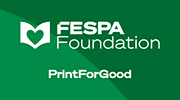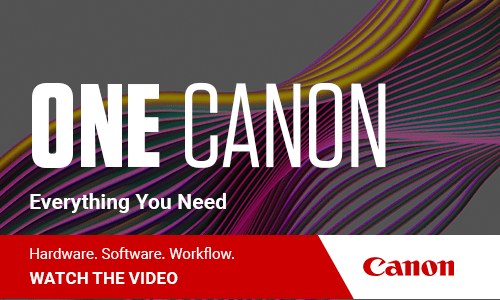
Over the years I have designed very successful cold email campaigns that converted in the double digits. I’m not against them.
However, when we think of cold emails, we are more likely think of this poor example:
“Do you have any printing we can bid on? We have very good prices. We do brochures, business cards, postcards, everything you need for your business. Give me a call for your next deal. Sincerely, Clueless in Seattle”
This is a real email from a real printer!
Hard to believe, right?
And yet, every day I receive cold emails just like it.
Now that we have seen a cold email that makes me shiver, let’s define a cold email.
> A cold email is when you have not met the person or company who is emailing you.
> A cold email is unsolicited.
> A cold email is often a mass email, but not not always.
> A cold email leaves you feeling… brrrr… stone cold if not done right!
In a cold email campaign, the sender usually buys your name from someone who is selling data: mail list brokers, trade show companies, vendor partners, government database aggregators, membership organizations, or business data resellers.
Inherently there is nothing wrong with a cold email.
If you, the recipient, have a need for what is being pitched, and the sender makes a credible case for their service or product, it may be a match made in heaven.
However, as we know, the more likely scenario is that the sender is like our Clueless friend.
THE WRONG WAY TO SEND COLD EMAILS:
> Impersonal
> Poorly worded
> Weak call to action
> No differentiation against competitors
> Bad grammar or lack of finesse
In the case of Clueless, he also sends me the SAME offer every month, sometimes with this bullying variation:
“I have not heard from you. I need to know yes or no.”
SAY WHAT?
Because he is Clueless, there’s no option to opt out of the emails other than to hit reply.
Normally I refuse to reply because it validates my email address. If he is a spammer, I just opened the door. If he is merely clueless, I just opened a dialog.
In fact, I did asked to be removed from the Clueless list and received this reply:
“Sandie (not how I spell my name) – Do you know someone who needs printing? I give you a 10% discount for every referral who buys over $2,000 from a competitor. Fax me their sales receipt and all their contact information.”
Ugh! As if!
Soooo, do I mark the sender as spam?
You may have a harder heart than I have, but I hate to punish a printer who has a Clueless salesperson.
Should I contact the owner and relate my concerns? How much time should I devote to this errant printing company?
I decide to do a quick Google search to see if this company deserves my sympathy.
I find that the company rates very high in quality and customer service. It has a modern website and strong testimonials. I even recognize a few of its employees whom I am connected to on LinkedIn.
And then, there it is.
A one-star rating on Yelp with the following comments:
“Who is this guy Clueless who emails me all the time?”….. “How do I opt out of this list?”….. “I am being spammed.”….. “I hate this company because of this **** Clueless salesperson.”…..“I will NEVER print with this company.”
Not good.
Even if Clueless successfully earns a sale from time to time with his spammy approach, this review clinches it. Clueless has irrevocably damaged his company reputation in my eyes.
You can see what can happen from such a clueless cold email approach.
Let’s quickly talk about how to send a cold email without burning bridges with recipients.
I am going to cover a lot of ground here, and if you want more details on any of these ideas, connect with me on LinkedIn or leave a comment below.
THE RIGHT WAY TO SEND COLD EMAILS:
- Use good data. Don’t use outdated lists or those procured from questionable sources.
- Print the list and manually go over every name, or at least a representative sample. Make sure data is mapped to the correct fields. Aggregators often flow in data from many sources to complete one contact, and there may be garbage fields or incorrectly mapped information.
- Run the list against your own marketing lists and exclude existing customers and prospects already in the pipeline.
- Use a professional email service so you don’t burn your email address. If too many people report you for spam, your email address and potentially any adress associated with your domain will be rejected by incoming servers.
- Use personalization. A first name is fine. Too much personalization in a cold email will freak people out. Use the first name field in the salutation and make sure to have an option if your recipient doesn’t have a first name listed in the database.
- Include a reason why you are sending. For example, one of my clients opened a new branch office and invited local business people to a free workshop.
- Include a link where the recipient can check you out. Make sure the page loads quickly and has quick-to-understand credentials and testimonials. Have an “About Us” page on your website. Don’t make the recipient struggle to learn about you.
- Include a personal link, such as a LinkedIn or YouTube icon, where the recipient can click through and find out about you personally. This increases your trustworthiness and memorability.
- Create a customized offer. This shows respect to the recipient that you have crafted something useful just for them. Mass offers are impersonal and forgettable.
- Include a deadline to reply. Seriously, you do not want to honor an offer you made years ago just because someone stumbled upon an old email of yours.
- Include a soft opt in. For example, invite the reader to subscribe to your newsletter and include a link to a sample.
- Be respectful. Use professional language. Don’t be too casual.
- As a call to action, it is weak to ask recipients to call you. Certainly do include all your contact information, but don’t ask the prospect to do all the work in a relationship they didn’t ask for.
- And, finally, here’s my own pet peeve, Please don’t make it just about price. Think about the message this sends. It says your company has no self respect. It implies that the recipient only cares about money. It sets the stage for the recipient to ask for discounts in every transaction. It’s just icky all the way around.
Be brief, useful, cool and interesting… not spammy.
It is a privilege to send email campaigns. I never forget that I am entering a very personal space. I believe email is much more personal and disruptive than social media, and, in many cases, more intrusive than text marketing. So remember, when sending cold emails, get a clue and always use current email best practices!
 Sandy Hubbard is a Marketing Strategist who helps printers take their businesses to the next level. She builds customized print marketing programs that help your company grow. Her philosophy is that any program needs to be sustainable over the long haul, with clear and calm guidance, reliable support, affordable tools, your own team of trained employees…and NO stress!
Sandy Hubbard is a Marketing Strategist who helps printers take their businesses to the next level. She builds customized print marketing programs that help your company grow. Her philosophy is that any program needs to be sustainable over the long haul, with clear and calm guidance, reliable support, affordable tools, your own team of trained employees…and NO stress!









